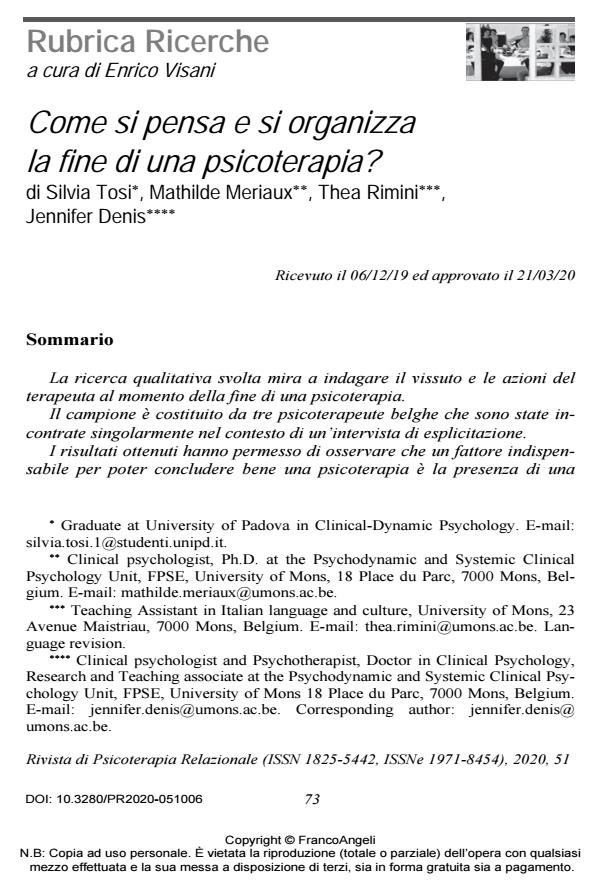Come si pensa e si organizza la fine di una psicoterapia?
Titolo Rivista RIVISTA DI PSICOTERAPIA RELAZIONALE
Autori/Curatori Silvia Tosi, Mathilde Meriaux, Thea Rimini, Jennifer Denis
Anno di pubblicazione 2020 Fascicolo 2020/51
Lingua Italiano Numero pagine 27 P. 73-99 Dimensione file 307 KB
DOI 10.3280/PR2020-051006
Il DOI è il codice a barre della proprietà intellettuale: per saperne di più
clicca qui
Qui sotto puoi vedere in anteprima la prima pagina di questo articolo.
Se questo articolo ti interessa, lo puoi acquistare (e scaricare in formato pdf) seguendo le facili indicazioni per acquistare il download credit. Acquista Download Credits per scaricare questo Articolo in formato PDF

FrancoAngeli è membro della Publishers International Linking Association, Inc (PILA)associazione indipendente e non profit per facilitare (attraverso i servizi tecnologici implementati da CrossRef.org) l’accesso degli studiosi ai contenuti digitali nelle pubblicazioni professionali e scientifiche
La ricerca qualitativa svolta mira a indagare il vissuto e le azioni del terapeuta al momento della fine di una psicoterapia. Il campione è costituito da tre psicoterapeute belghe che sono state incontrate singolarmente nel contesto di un’intervista di esplicitazione. I risultati ottenuti hanno permesso di osservare che un fattore indispensabile per poter concludere bene una psicoterapia è la presenza di una buona alleanza terapeutica. Inoltre, è stato possibile osservare che le terapeute intervistate hanno co-costruito insieme ai rispettivi pazienti la chiusura della terapia e ciò ha favorito il processo di separazione. È stato possibile osservare che la chiusura di una psicoterapia è un momento importante del percorso clinico. Inoltre, se la conclusione della terapia è preparata ed elaborata per tempo insieme al paziente, egli può avere la possibilità di sfruttare al meglio tale processo e di viverlo come un’apertura verso nuove possibilità ed esperienze.
Parole chiave:Fine psicoterapia, psicoterapia, intervista d’esplicitazione, riflessività e ragionamento clinico.
Silvia Tosi, Mathilde Meriaux, Thea Rimini, Jennifer Denis, Come si pensa e si organizza la fine di una psicoterapia? in "RIVISTA DI PSICOTERAPIA RELAZIONALE " 51/2020, pp 73-99, DOI: 10.3280/PR2020-051006